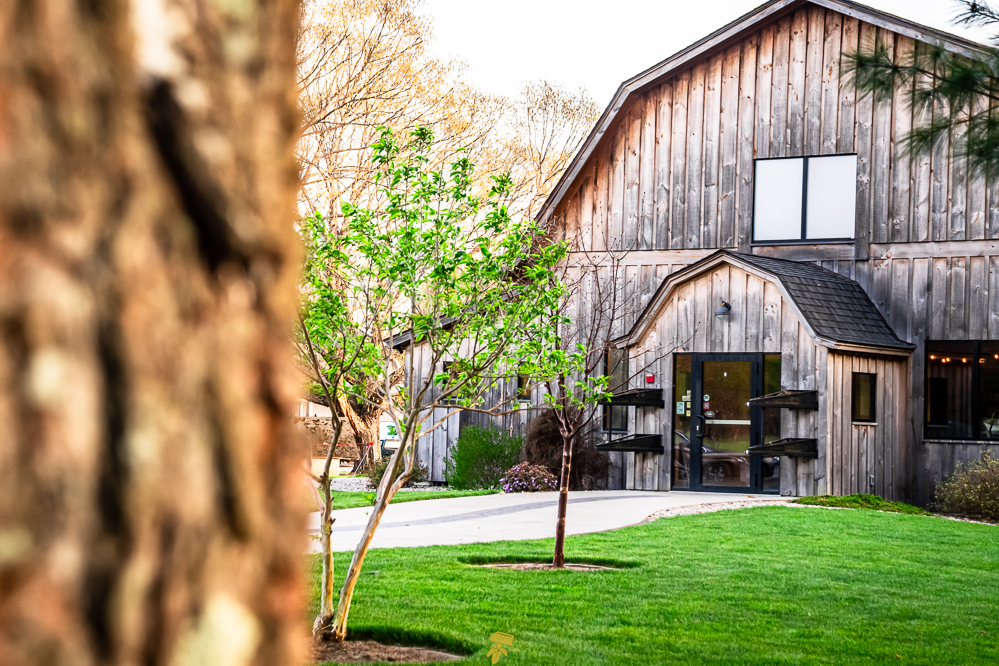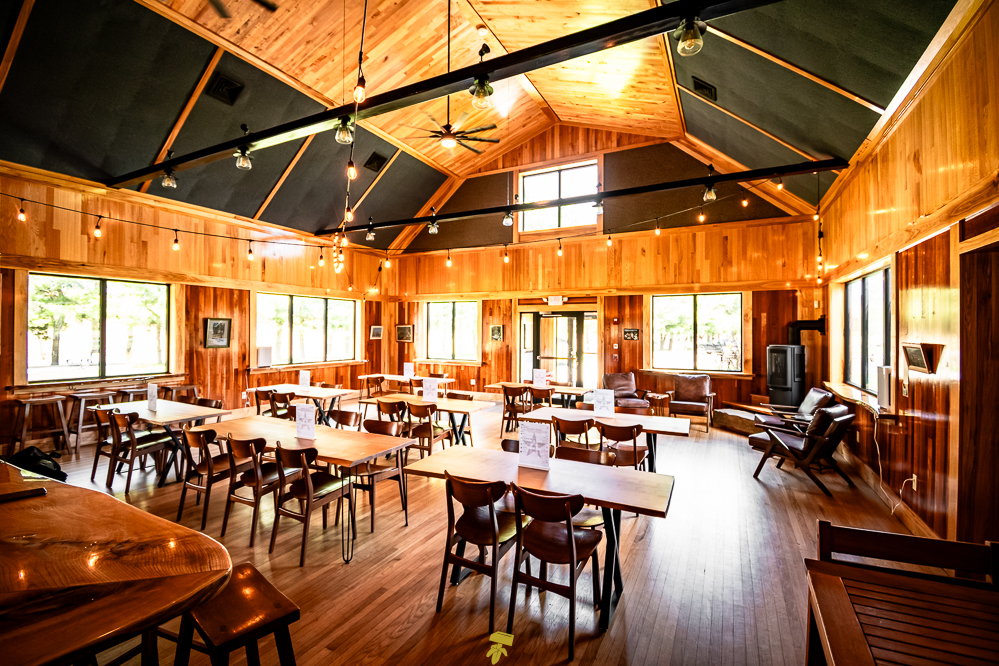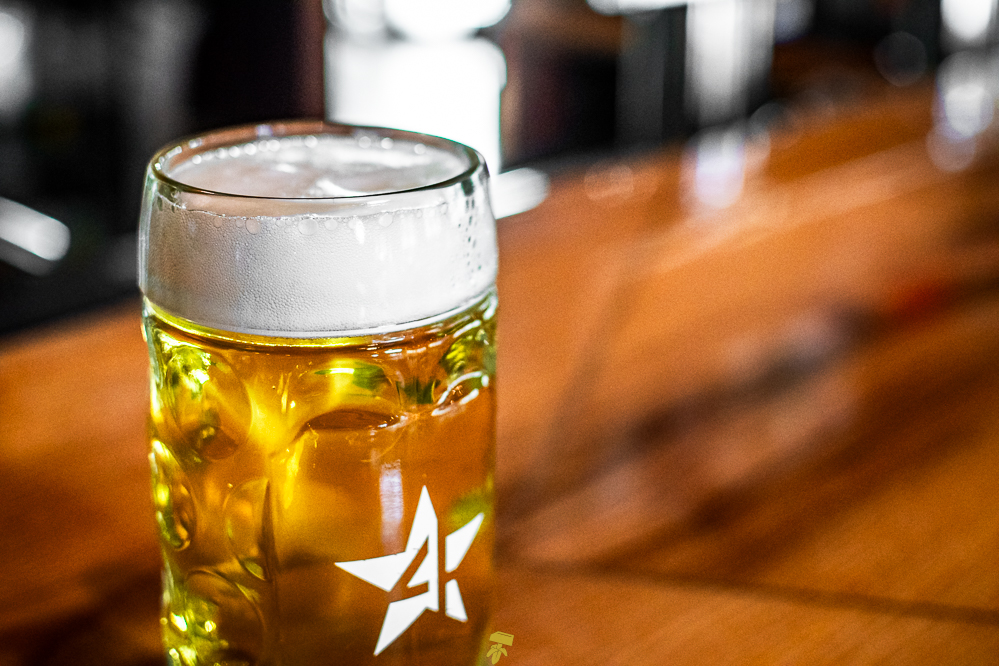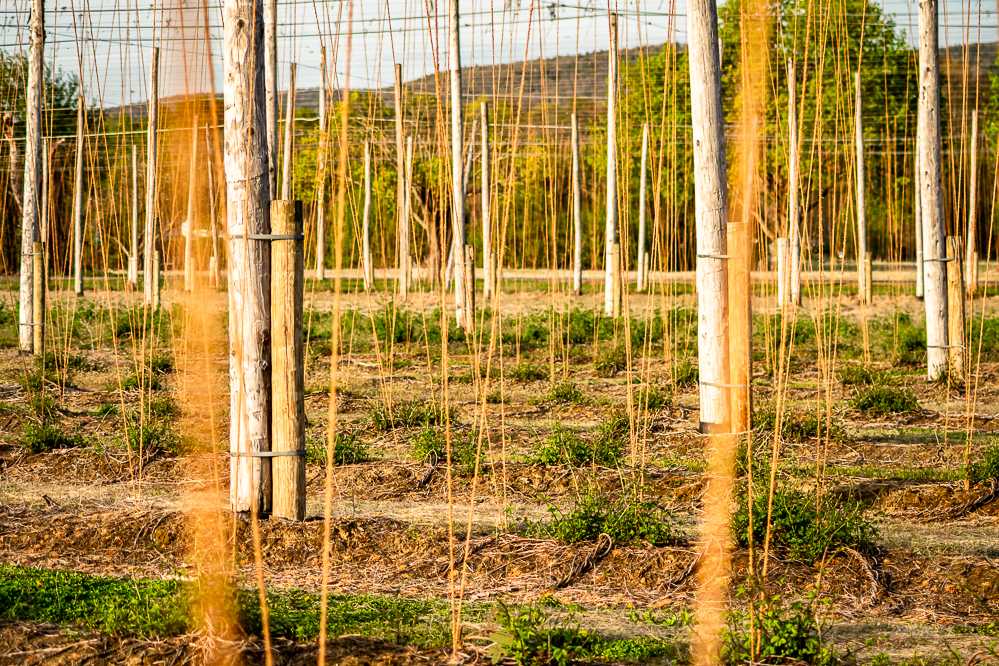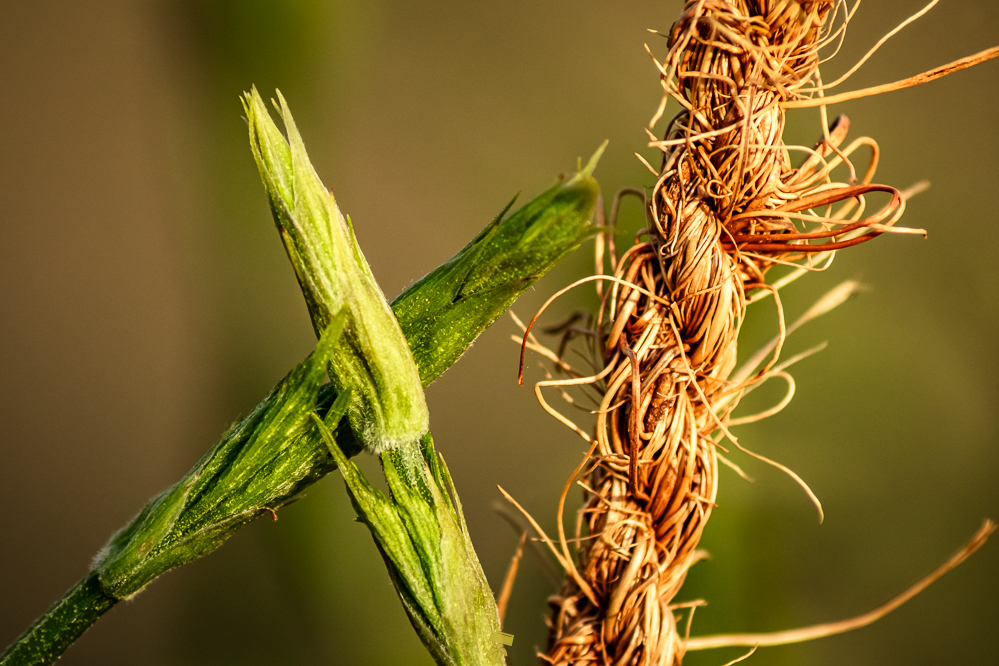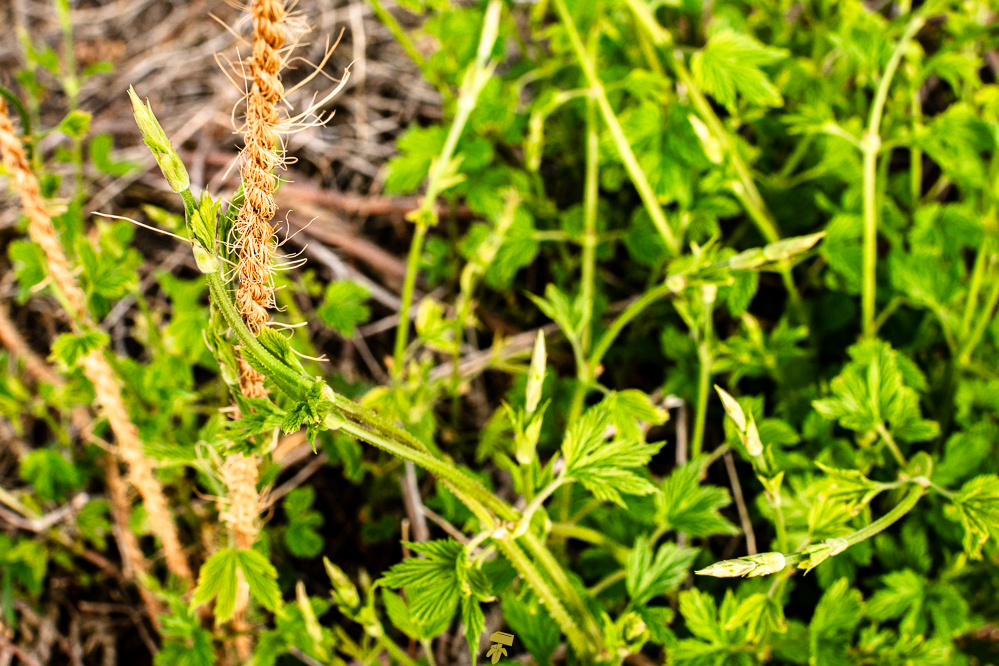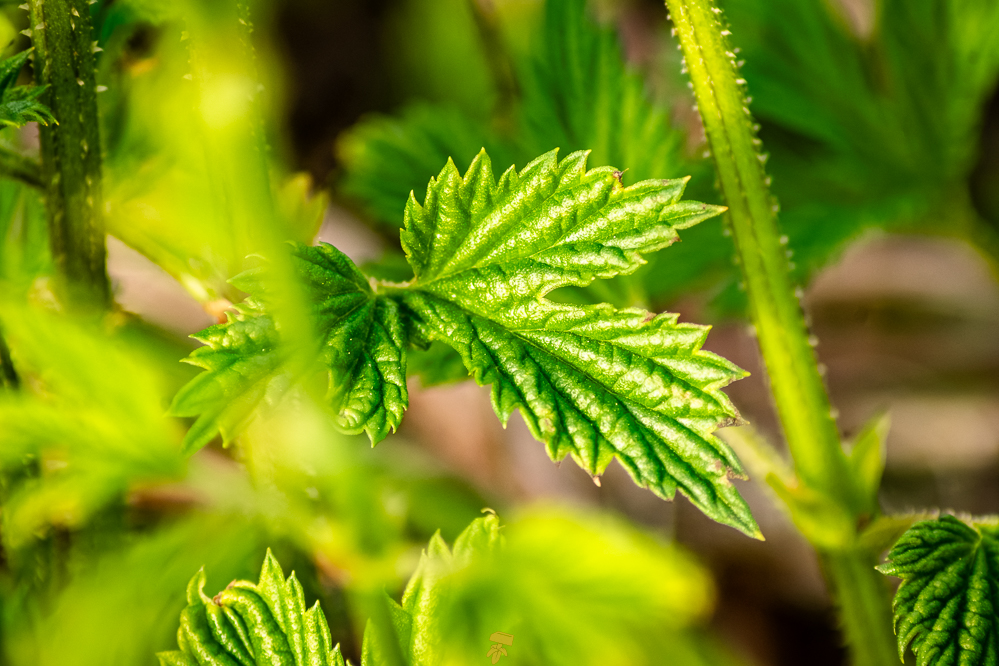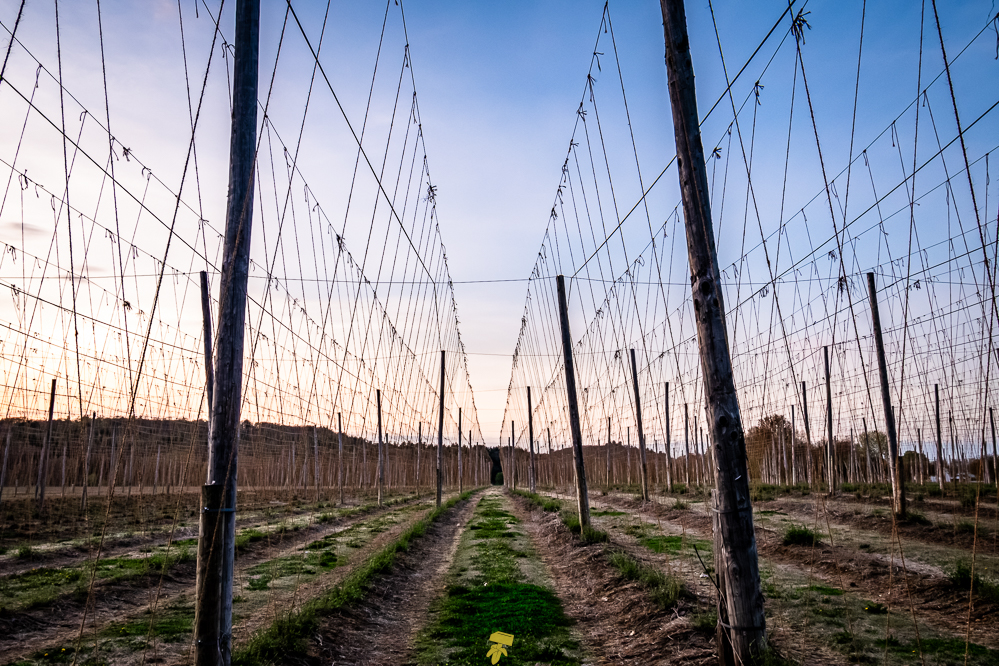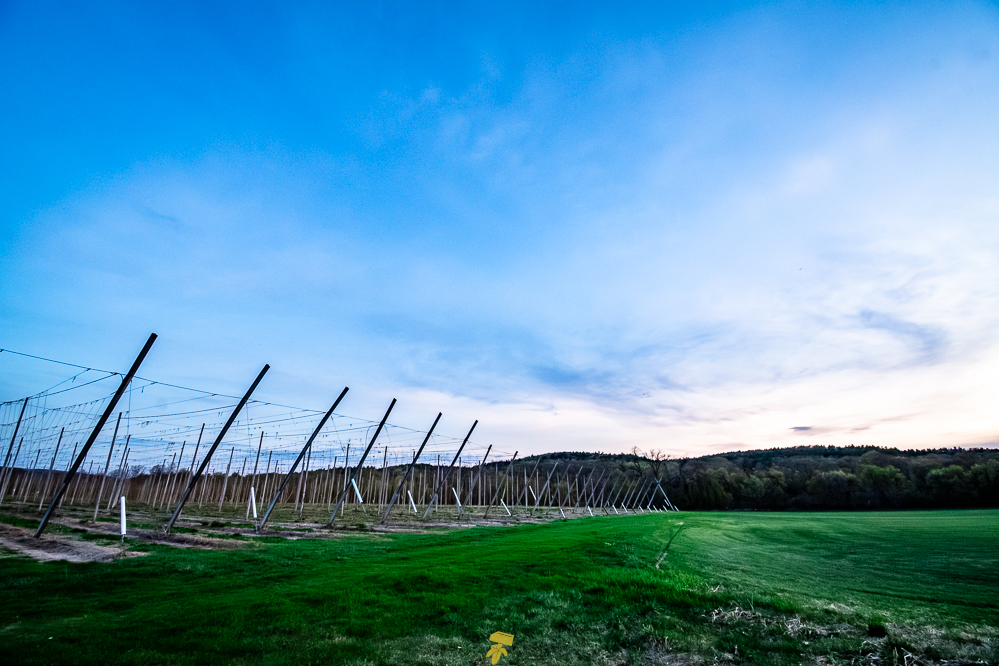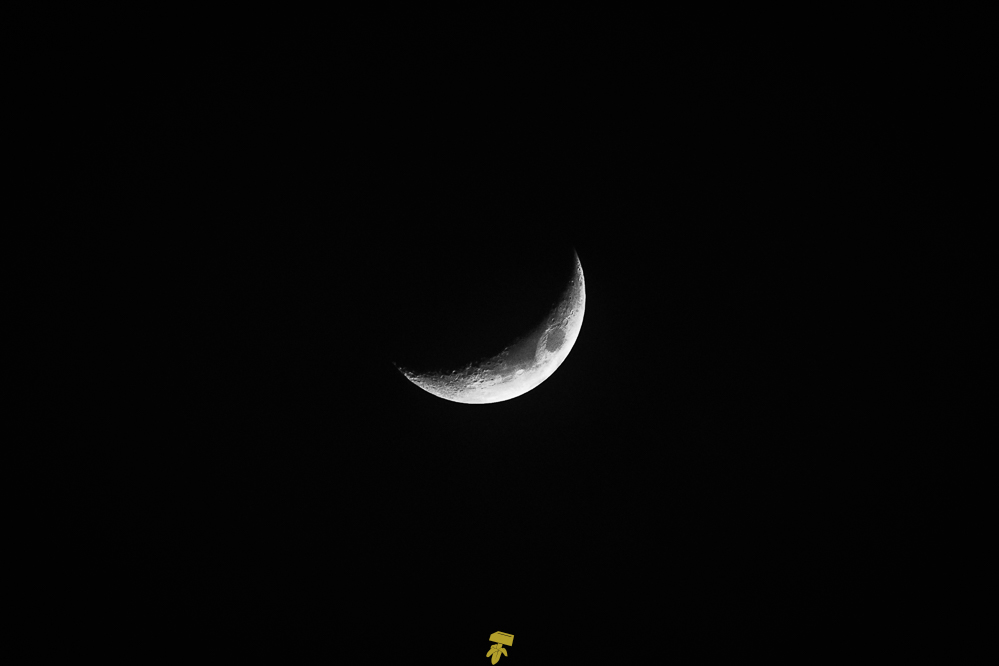Along the 42nd parallel, the farm is located by the Connecticut River, surrounded by farmland with rolling hills towards the west. Four Star Farms has the biggest hopyard in the state of Massachusetts at 17 acres, growing several varieties including Centennial, Chaos, Magnum, Mt. Rainier, and an experimental field. I will be following the growth of the beer ingredient from the ground all the way to the glass.
While the early spring snow thaws, the farmers are busy preparing for a new season by repotting previous cuttings that have been nurtured into small plants to start the propagation cycle again. Some of these will then be transferred to the yards to fill empty spaces and help increase production. Once the ground is clear, it’s time to build the infrastructure so the plants can grow. This consists of hanging rope along the permanent wooden beams and metal wire.
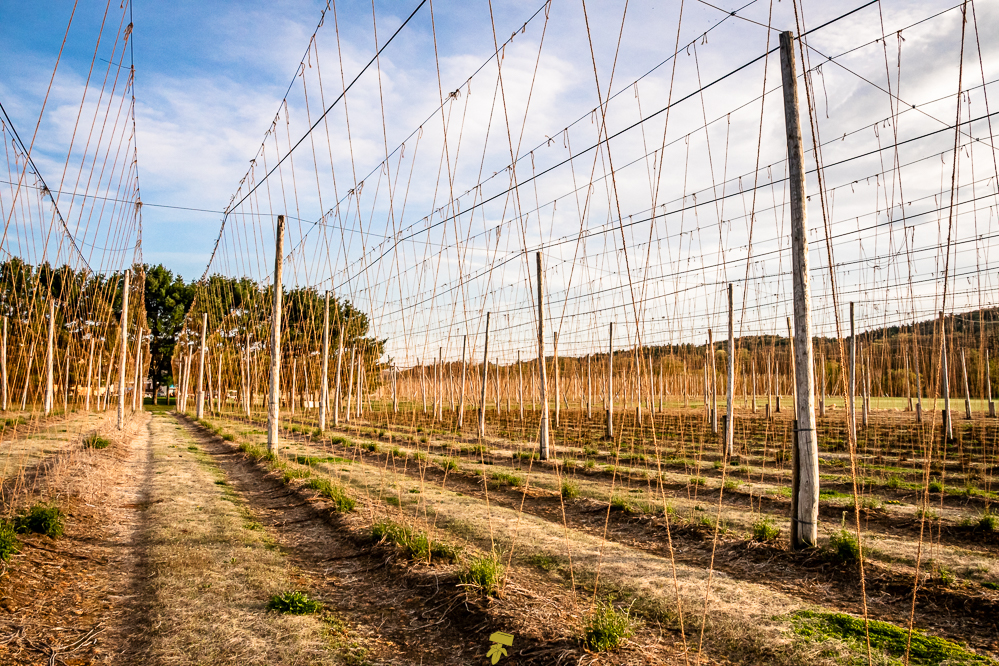
The farmers use a lift pulled by a tractor, moving slowly down each row as a person on both sides strings the coir by hand at a height of about 18 feet, while a crew below plunges the rope into the ground where the plant will grow. Coir, also known as coconut fibre, is a fibrous material found between the hard, internal shell and the outer coat of a coconut. This process takes a few days to complete the whole yard, and can be slowed by wet or windy weather. Once complete, it looks like a bizarre spider web of golden silk, ready to entangle unsuspecting farmers, brewers, and beer-drinkers who may get too close.
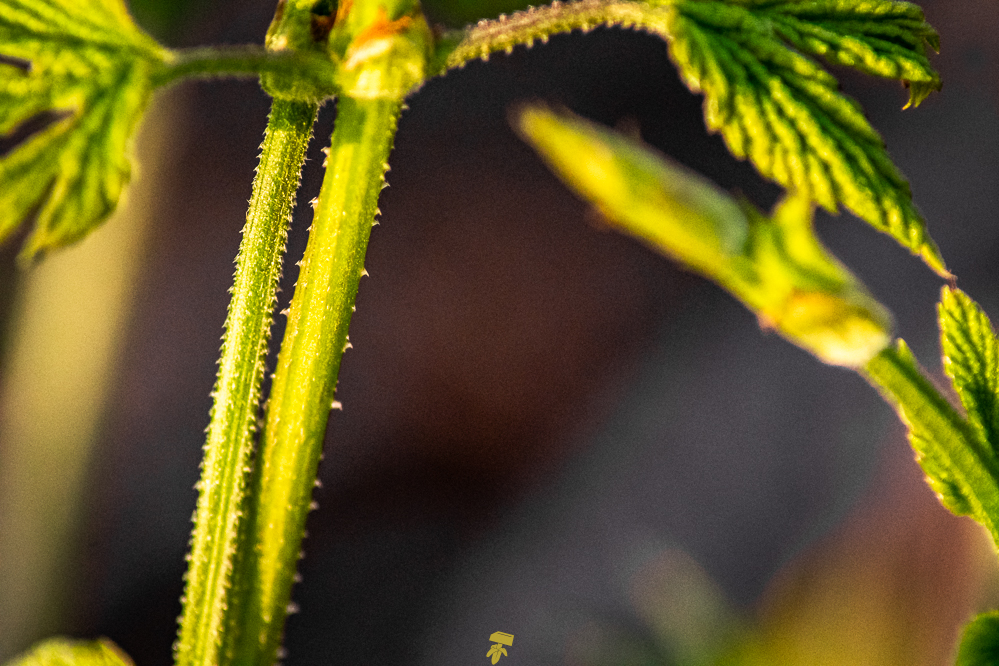
Common Hops (Humulus Lupulus), a member of the Cannabaceae family of flowering plants, are perennial plants that produce bines from their roots each spring, usually taking three years to reach full maturity. The twining stems that climb up trellises are called bines and are not vines in the traditional sense, as they climb using stiff hairs instead of tendrils. These hairs easily cling to the coconut fibre, allowing the plant to grow vertically. During spring, hop plants prioritize the growth of their main bines upwards and the development of leaves. This initial vegetative growth phase is crucial as it directly impacts the plant’s overall yield and future production of cones, the flower of the plant.
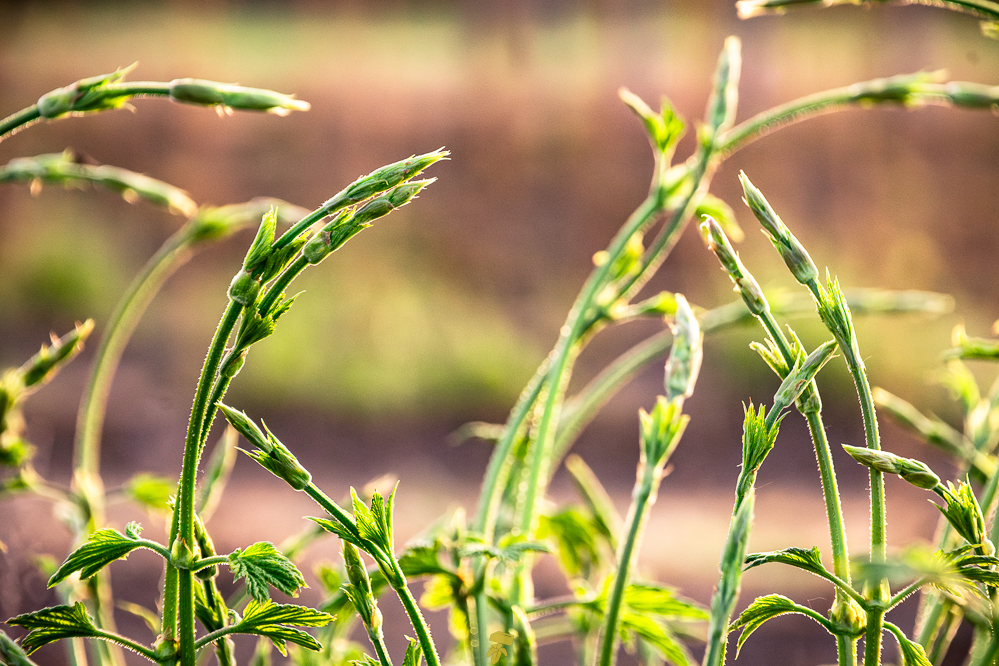
The bine shoots are sprouting through the ground and will very soon be hand-trained to follow the coir clockwise as they grow to the top of the trellis, following the sun. Each plant is cut back to the best 2-3 shoots, which ensures each shoot is not competing for resources to grow. As the bines climb, leaves develop along their length, providing the plant with the necessary surface area for photosynthesis. The plant needs to reach a certain height to transition to the flowering phase, typically around the time of the summer solstice. The hop plant is dioecious, that is it has separate male and female plants. Only the female plant produces the cones used in brewing.
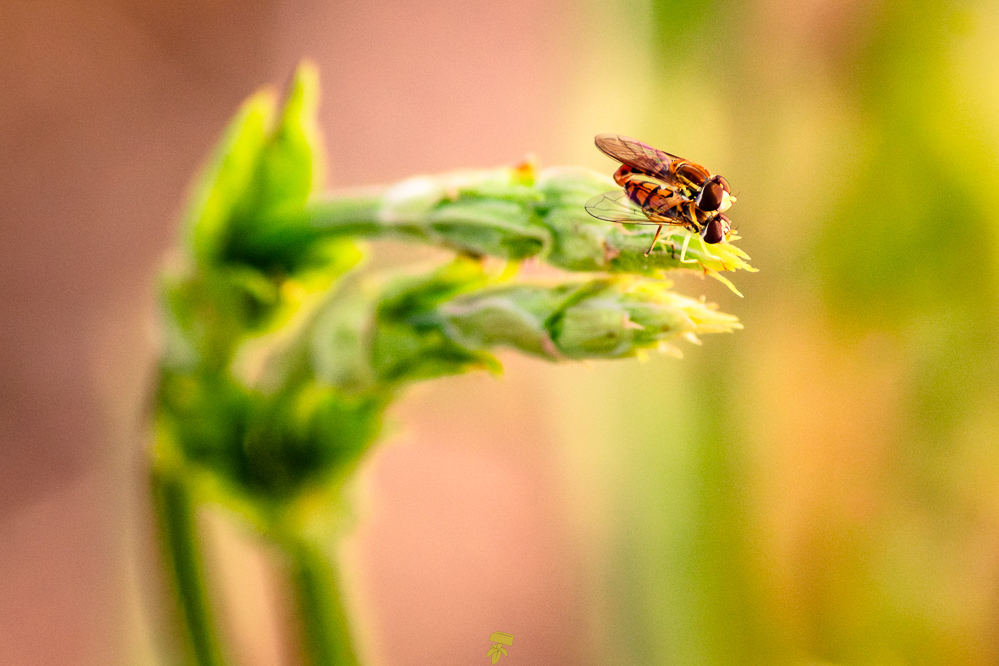
Spending the early part of the afternoon inside the taproom, I got to speak with taproom manager Chris Hooper and farmer Jacob L’Etoile about beer, hops, and the love of growing, at the same time getting to know a few of the beers. The brewery uses their own hops and partially their own grains in all its brews. Started the day with their new crushable pilsner, “Beer Please,” that clocks in at a low 3.8%, brewed with Crystal hops, one of the closest varieties to a Noble hop that Four Star grows. Alternating with their West Coast Pale Ale, “Spring Mending,” a slightly malty yet bitter and citrusy offering, hopped with Cascade, that kept the theme of this visit going. …Also watched a pair of hover flies (technically Margined Calligraphers) in spring heat getting it on.
